
You may double left-click on a word on this page to retrieve its definition. Tweet Follow
National Folk Dance
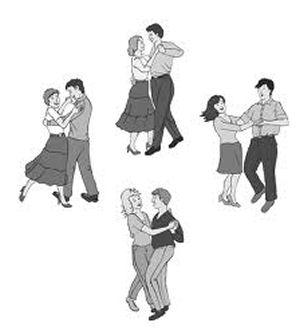
National Folk Dance: Square Dance (1982-1983)
If there is anyone to thank, or to blame, depending on your viewpoint, for the square dance as the folk dance of the majority of states, it is the California-based "National Folk Dance Committee," later superceded (1987) by the American Folk Dance Committee of the United Square Dancers of American, Inc. (USDA) who, in turn, received assistance from the American Folk Dance Committee of LEGACY, International. This was serious business.
An official national folk dance
The proliferation of official state dances began with attempts by the California National Folk Dance Committee and, later, the USDA and LEGACY, International to name the square dance the official national folk dance of the United States of America.
According to the American Folklife Center at the Library of Congress, efforts commenced, in 1965, to designate the square dance the official folk dance of the nation. Western-style square dance organizations across the nation collaborated on these efforts. From 1973 through 2003, more than thirty bill proposals were introduced at a federal level to accomplish this goal.
Controversy regarding the legislation ensued.
Western-style square dance organizations supported numerous dance styles. Traditional square dancing, clogging, circle, contra, line, round and other heritage dance styles all fell under the broad purview of these organizations. They added non-traditional dance steps and established serious, highly structured competitive dancing contests. Their idea to promote square dancing as the nation's official state folk dance was seen as clearly self-serving by traditional square dance purists.
Historians and folklorists questioned the motives of the modern western-style dance clubs and found fault with the organizations' loose characterization of square dancing. They drew distinctive lines between traditional square dancing and the rest and questioned whether one specific dance style could be representative of a nation whose people came from such diverse backgrounds. They argued that evidence showed that traditional square dancing was just one type, among many, of traditional dance.
In 1982, after years of failed attempts, promoters of the square dance as the national folk dance met with some success, though limited. Senate Joint Resolution No. 59, sponsored by Senator Robert Byrd of Virginia, was approved by the United States Senate. Further, it was approved, as amended, in the House of Representatives.
PUBLIC LAW 97-188—JUNE 1, 1982
Public Law 97-188
97th CongressJoint Resolution No. 59
Designating the square dance as the national folk dance of the United States.
Whereas square dancing has been a popular tradition in America since early colonial days;
Whereas square dancing has attained a revered status as part of the folklore of this country;
Whereas square dancing is a joyful expression of the vibrant spirit of the people of the United States;
Whereas the American people value the display of etiquette among men and women which is a major element of square dancing;
Whereas square dancing is a traditional form of family recreation which symbolizes a basic strength of this country, namely, the unity of the family;
Whereas square dancing epitomizes democracy because it dissolves arbitrary social distinctions; and
Whereas it is fitting that the square dance be added to the array of symbols of our national character and pride: Now, therefore, be it
Resolved by the Senate and House of Representatives of the United States of America in Congress assembled, That the square dance is dance, designated the national folk dance of the United States of America for 1982 and 1983.
Approved June 1, 1982.
LEGISLATIVE HISTORY--S.J. Res. 59:
CONGRESSIONAL RECORD
Vol. 127 (1981): Sept. 23, considered and passed Senate.
Vol. 128 (1982): May 11, considered and passed House, amended.
May 19, Senate concurred in House amendment.
The House of Representatives approved an amendment to the resolution, and the Senate agreed, stipulating that the square dance would serve as the national folk dance temporarily, specifically, through 1983.
On June 1, 1982, President Ronald Regan signed Senate Joint Resolution No. 59, as amended, naming the square dance the national folk dance of the United States of America... for a limited time only; 1982 and 1983.
USDA suspends activity on a national level to build support at the state level
In 1982, the decision was made to curtail efforts to designate a national folk dance and to place the focus on state legislatures. It was thought that, by accumulating a majority of state designations, more pressure could be levied at a national level. In other words, the states were to serve as the leverage to get the square dance designated at the national level. These efforts met with a great deal more success than had been achieved at a national level.
Posted on the website of the United Folk Dancers of America, Inc. (USDA):
NATIONAL FOLK DANCE COMMITTEE
THE NATIONAL FOLK DANCE CAMPAIGN IS ON HOLD UNTIL
WE CAN GET SUPPORT TO SUBMIT A NEW BILLThe square dance activity has worked for many years toward the goal of getting square dancing recognized as the National Folk Dance. There are currently 31 states that have designated square dancing as their State Folk Dance. The passage of a bill would give square dancing and its related activities more visibility and have a positive effect on recruiting new dancers.
This page updated on 07/03/15
The USDA claims that 31 states have designated square dancing as its official state folk dance. We can only document 28. Any assistance in this area would be appreciated.
Some states have designated the square dance as their official "folk dance." Others have designated it their official "American folk dance." Still others have designated the square dance their official "dance."
Though the square dance served only temporarily as the national folk dance over thirty years ago, the quarterly newsletter of the USDA highlights the cover of each issue with "Square Dance - The National Folk Dance".
The USDA indicates that the following states have adopted the square dance as their official state folk dance. We have discovered most of the designations, but some remain elusive. We have found no evidence of official designation for four of the states. We are still looking.
- Kentucky: Reportedly adopted in 1972. To date, we have not acquired documentation of this.
- Oregon: 1977 by an Act of the Oregon State Legislature.
- Washington: 1979 by an Act of the Washington State Legislature.
- Tennessee: 1980 by an Act of the Tennessee General Assembly.
- Alabama: 1981 by an Act of the Alabama Legislature.
- New Jersey: 1983 by Senate Joint Resolution.
- Florida: 1986 by House Concurrent Resolution.
- West Virginia: 1987 by Senate Concurrent Resolution.
- California: 1988 by an Act of the California State Legislature.
- Oklahoma: 1988 by Senate Concurrent Resolution.
- Idaho: 1989 by House Concurrent Resolution.
- Massachusettes: 1990 by an Act of thr General Court of the Commonwealth of Massachusettes.
- Illinois: 1990 by an Act of the Illinois General Assembly.
- Arizona: 1990 by proclamation of Governor Rose Mofford.
- Arkansas: 1991 by an Act of the Arkansas General Assembly.
- Virginia: 1991 by an Act of the Virginia General Assembly.
- Montana: Unknown at this time.
- Texas: 1991 by House Concurrent Resolution.
- Colorado: 1992 by an Act of the Colorado General Assembly.
- South Carolina: 1993 by and Act of the South Carolina Legislature.
- Delaware: 1994 by Senate Concurrent Resolution.
- Utah: 1994 by an Act of the Utah State Legislature.
- Maryland: 1994 by an Act of the General Assembly of Maryland.
- Mississippi: 1995 by an Act of the Mississippi Legislature.
- North Dakota: 1995 by an Act of the North Dakota Legislative Assembly.
- South Dakota: Unknown at this time.
- Missouri: 1995 by an Act of the Missouri General Assembly.
- Connecticut: 1995 by an act of the Connecticut General Assembly.
- Georgia: 1996 by an Act of the Georgia General Assembly.
- Nebraska: 1997 by proclamation of the Governor Ben Nelson.
- Louisiana: 1999 by House Concurrent Resolution.
More information on this controversy can be found in the "Additional Information" section below.
Sources...
"10 Reasons to Square Dance." United Square Dancers of America (USDA). United Square Dancers of America (USDA), 3 July 2015. Web. 6 Jan. 2016. <www.usda.org>.
Byrd, Robert C., Senator. "S.J.Res.59 - A Joint Resolution Designating the Square Dance as the National Folk Dance of the United States." Congress.gov. Library of Congress, 1 June 1982. Web. 8 Jan. 2016.
Dean, Eddie. "The Great Square Dance Conspiracy Uncovering the Evil Secrets of Operation Do-Si-Do." Washington City Paper. 23 Feb. 1996. Web. 17 Jan. 2016.
Mangin, Julie. "The State Folk Dance Conspiracy: Fabricating a National Folk Dance." The Old-Time Herald. The Old Time Herald, 1995. Web. 15 Jan. 2005.
Shearer, Benjamin F. and Barbara S. State Names, Seals, Flags and Symbols: A Historical Guide Third Edition, Revised and Expanded. Westport, Conn.: Greenwood Press, 3 Sub edition, 2001.
"Square Dance Legislation Collection, The." The American Folklife Center. The Library of Congress, 15 May 2015. Web. 18 Nov. 2004.
Additional Information
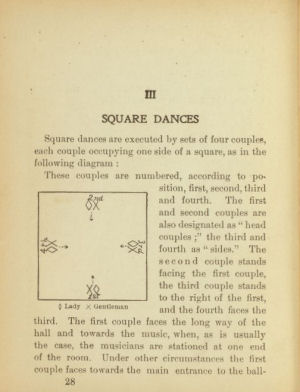
Square Dance Instruction
The State Folk Dance Conspiracy: Fabricating a National Folk Dance: by Judy Mangin - Originally published in the Old-Time Herald, v.4(7) p.9-12, Spring 1995.
The Thought Of An Official Folk Dance Sends Him Reeling: Article, by Eric Zorn, in The Chicago Tribune questioning the act of making the square dance an official symbol; April 13, 1990.
The Square Dance Legislation Collection: American Folklife Center 1984/024, Compiled by Michelle Forner, Library of Congress, Washington DC, December 1994
National Folk Dance Effort Moves Forward: We're On Our Way Now, So Let's Make a Lot of Noise!: United Square Dancers of America National Folk Dance Committee.
Square Dancing 101: Square dancing basic including positions, formations, moves, and a glossary.
Video Square Dance Lessons Online: Video Square Dance Lessons Online and on DVD from Cyberpoint Marketing, LLC.
A Brief History of Square and Round Dancing: by Herb Egender.
Square Dancing: The Historical Geography of an American Folk Custom: by Richard M. MacKinnon, Allan Hancock College, Santa Maria, California.
Square Dance History Project: Website devoted to the documenting the history of square dancing with historical documents and an emphasis on imagery as much as possible.
History and Heritage of Modern American Square Dancing: A summary of the essays by Dorothy Shaw, Bob Osgood and Kenny Reese.
State dances:
Complete list of official state dances from NETSTATE.COM
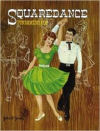
Squaredance Fundamentals
John W. Jones
Squaredance Fundamentals, John W. Jones. 208 pages. Publisher: BookSurge Publishing (February 5, 2007)
While there have been countless fun books written on square dancing, Squaredance Fundamentals was the first to cut to the chase. There is no interesting history of square dancing, there are no entertaining anecdotes, just the nuts and bolts of how to square dance. Revolutionary illustrations show the dancer’s point of view, not just the spectators’ viewpoint. Dancers can, without turning on their heads, glean from the detailed illustrations exactly what they need to be doing with their hands, feet, etc. Each dancer can effortlessly grasp the material and easily retain it. Renowned master caller/teacher, Marshall Flippo, assiduously assisted the author in establishing the very first guidelines for standardized “Basic Maneuvers” which would enable square dancers to dance gracefully with any group, anywhere.
No one shows you better how to execute the maneuvers than John W. Jones with his super simplified instructions and state-of-the-art illustrations in Squaredance Fundamentals - the gold standard for over 37 years.
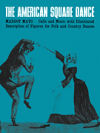
The American
Square Dance
Margot Mayo
The American Square Dance, by Margot Mayo. 116 pages. Publisher:Music Sales American (September 1, 2006)
You can have fun square dancing and you'll learn how to dance the figures and even learn how to call a square dance with Margot Mayo's classic manual, The American Square Dance. Here is the basic book for square dancers containing all of the essentials for many hours of enjoyment. An illustrated glossary of square dance terms shows all of the basic square dance figures – promenade, allemande left, do-si-do, etc. Complete instructions, calls and illustrated figures for 13 of the most popular American square dances appear, plus the music all ready for your pianist and fiddlers to play.
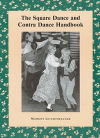
The Square Dance and
Contra Dance Handbook
Margot Gunzenhauser
The Square Dance and Contra Dance Handbook: Calls, Dance Movements, Music, Glossary, Bibliography, Discography, and Directories, by Margot Gunzenhauser. 320 pages. Publisher: McFarland & Company, Inc., Publishers; annotated edition (July 28, 2010)
This comprehensive guide to traditional style square and contra dancing, sometimes referred to as "country dancing," covers both music and style and gives background information on various dance types and calling techniques. Ninety dances, presented in chapters according to type (mixers, progressive circles, contra, Southern mountain style, squares and others), in a wide variety of formations are described with drawings and diagrams for many of the movements. A glossary of terms, a directory of addresses (organizations; vendors of books, recordings and audio equipment; and dance camps), and an annotated discography and bibliography are also provided.
A glossary of terms, a directory of addresses (organizations; vendors of books, recordings and audio equipment; and dance camps), and an annotated discography and bibliography are also provided.
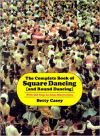
The Complete Book
of Square Dancing
(and Round Dancing)
Betty Casey
The Complete Book of Square Dancing (and Round Dancing), by Betty Casey. 208 pages. Publisher: University of North Texas Press (June 1, 2000)
This book includes: 50 basic movements, 35 advanced movements, variations, dances that are a part of the American heritage, Contra and Round Dances, polkas and reels, and calls, past and present.
“Square dancing is friendship set to music,” says author Betty Casey. Just take four couples, old or young, put ’em on a good floor, turn on the music, and you’re all set. Whether you’ve done it before or you’re just starting out, this book tells you everything you need to know—85 basic movements used all over the world, the spirited calls unique to square dancing, the costumes and equipment that are best, and music (from “Red River Valley” to “Mack the Knife”) that will set your feet in motion.
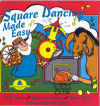
Square Dancing
Made Easy
Square Dancing Made Easy, Grade level: K-6. Audio CD (September 1, 1995), Number of Discs: 1, Label: Educational Activities, Inc.
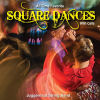
All Time Favorite
Square Dances
All Time Favorite Square Dances with Calls, Audio CD (September 8, 2009), Number of Discs: 1, Label: KADO, Run Time: 60 minutes.
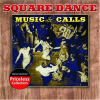
Square Dance Music
& Calls
Square Dance Music & Calls, Audio CD (November 21, 2006), Number of Discs: 1, Label: Collectables Records.
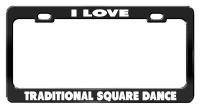
Black Metal
License Plate Frame
I LOVE TRADITIONAL SQUARE DANCE Black Metal Car Accessories License Plate Frame, This high quality license plate frame is made of metal, and it's the best quality item of its kind in the market. The lettering and art work are done by waterproof vinyl on the license plate frame and it will last for many years without any damage. It will not get brittle or cracked. It fits on all USA and Canada vehicles. It measures 12.5" X 6.5" and is durable to last under all weather conditions.
- Heavy Duty High Quality Metal License Plate Frame.
- Perfect Gift idea And Easy Installation.
- Rust, Corrode And Fade Free For Many Years.
- Fits all US and Canada License Plates.
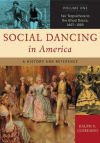
Social Dancing in America: A History and Reference (Volume One), by Ralph G. Giordano. 380 pages. Publisher: Greenwood (November 30, 2006)
Social Dancing in America examines the role of social dancing in daily life from the first settlements in 1607 through the birth of the nation in 1776 and into the beginning of the 21st century. This two-volume set provides a history of American social dances including the Virginia Reel, Square Dancing, the Lindy Hop, Rock 'n' Roll, the Twist, Disco, Breakdancing, and Hip-Hop. Social Dancing in America places social dancing in a historical, social, cultural, and political context.
Volume 1 explores the integral role that social dancing played in the lives of Americans from the first settlements in 1607 through the 19th century, often in the most unlikely of ways. For example, readers may be surprised to learn that George Washington was a well-known aficionado of social dancing, and that he incorporated the etiquette and manners of dances such as the Minuet as a means of diplomacy to secure European allies during the Revolutionary War. After his death, Americans continued to celebrate his birthday with a grand ball that included dancing.
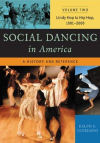
Social Dancing in America: A History and Reference (Volume Two), by Ralph G. Giordano. 428 pages. Publisher: Greenwood (November 30, 2006)
Volume 2 places social dance in a 20th-Century context, illustrating how social dancing itself paralleled the social, economic, and cultural traditions of each era. For example, segregation and the Jim Crow mentality was cemented in place all over the United States, and for much of the century, dancing and dance halls were strictly segregated. Segregation forced a mass migration north, and with it came the transformation of Delta Blues music into an American original—Jazz. Jazz gave birth to the Charleston, and later evolved into Swing, which created the Lindy Hop. Later, with the advent of television, programming such as American Bandstand, Soul Train, Dance Fever, and MTV greatly influenced dance styles and modern trends such as Rock 'n' Roll, Freestyle, Disco, Breakdancing, and Hip-Hop.


